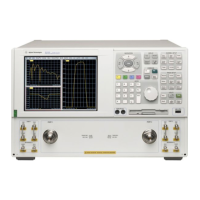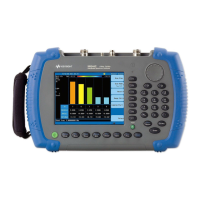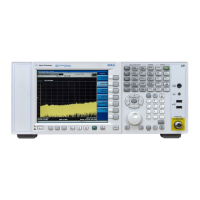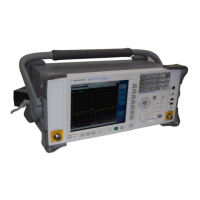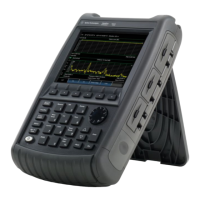5-10 Service Guide N5242-90001
Theory of Operation PNA Series Microwave Network Analyzers
Synthesized Source Group Operation N5242A
A4, A13, and A11 13.5 GHz Synthesizer Boards
On 2-ports models, the A13 13.5 GHz synthesizer board is optional and included only with
Option 224.
The A4, A13, and A11 13.5 GHz synthesizer boards use the 50 MHz reference signal from
the A10 frequency reference board to tune two VCO circuits: one that sweeps from 2 GHz
to 4 GHz and one that is set to a fixed CW frequency of 3.4 GHz.
In bands 2-13, the 3.4 GHz signal is mixed with 3.41 GHz to 3.90 GHz signals from the
2
–4 –GHz oscillator to produce the output frequencies of 10 MHz to 500 MHz as listed in
Table 5-2.
In bands 14 and 15, the output of the swept VCO is passed through a divide-by-4 circuit to
produce the output frequencies listed in Table 5-2.
In bands 16 and 17, the swept VCO signal is passed through a divide-by-2 circuit to
produce the output frequencies listed in Table 5-2.
In bands 18
–20, the swept VCO signal is passed directly to the output of the synthesizer
board to produce the output frequencies listed in Table 5-2.
In bands 21–36, the swept VCO signal is passed through a doubler circuit where bands
21
–23 and 29–30 are sent directly to the output of the synthesizer board while bands 26–28
and 34
–36 are passed through another doubler circuit then to the output of the synthesizer
board to produce the output frequencies listed in Table 5-2.
The output of the A11 13.5 GHz synthesizer board (the LO synthesizer) is 7.606 MHz
higher than the output of the A4 and A13 13.5 GHz synthesizer boards (the source
synthesizers). This is because the output of the A11 13.5 GHz synthesizer board is routed
through the A21 multiplier/amplifier 26.5 board to the A23 and A24 mixer bricks where
they are mixed with the test signals to produce a 7.606 MHz IF signal for each of eight
channels (A
–D and R1–R4). Refer to “A23 and A24 Mixer Bricks” on page 5-21 for a more
complete description.
A5 and A8 26.5 GHz Source Boards
On 2-port models, the A8 26.5 GHz source board is optional and included only with
Option 224.
In bands 2–19, the input signals from the A4 or A13 13.5 GHz synthesizer board are
passed through to both outputs (main and secondary) unchanged.
For bands 20–28, the input signals are passed directly to the secondary output or amplified
and filtered, then sent to the main output.
For bands 29–36, the input signals are doubled, filtered, and amplified. The signals for
these bands are then either passed directly to the secondary output or passed through
more amplification and filtering and sent to the main output.
Together these signals for bands 2–36 create the full synthesized source output frequency
range of 10 MHz to 26.5 GHz. These output frequencies for each band are listed in
Table 5-2.
The A5 26.5 GHz source board provides an EXT TSET DRIVE RF OUT signal to the rear
panel. This signal is output in bands 20–36 at a frequency range of 3.2–26.5 GHz for use

